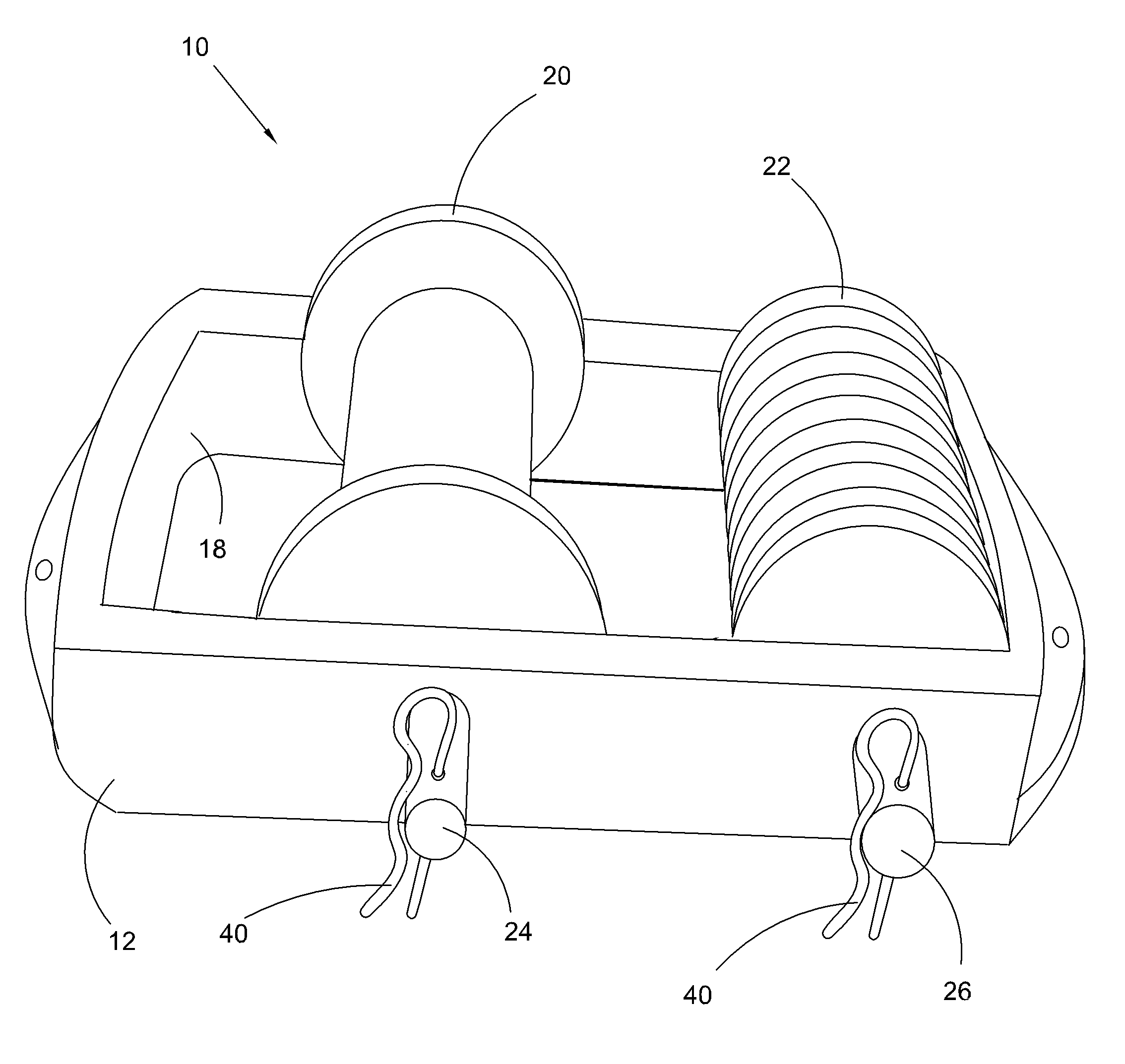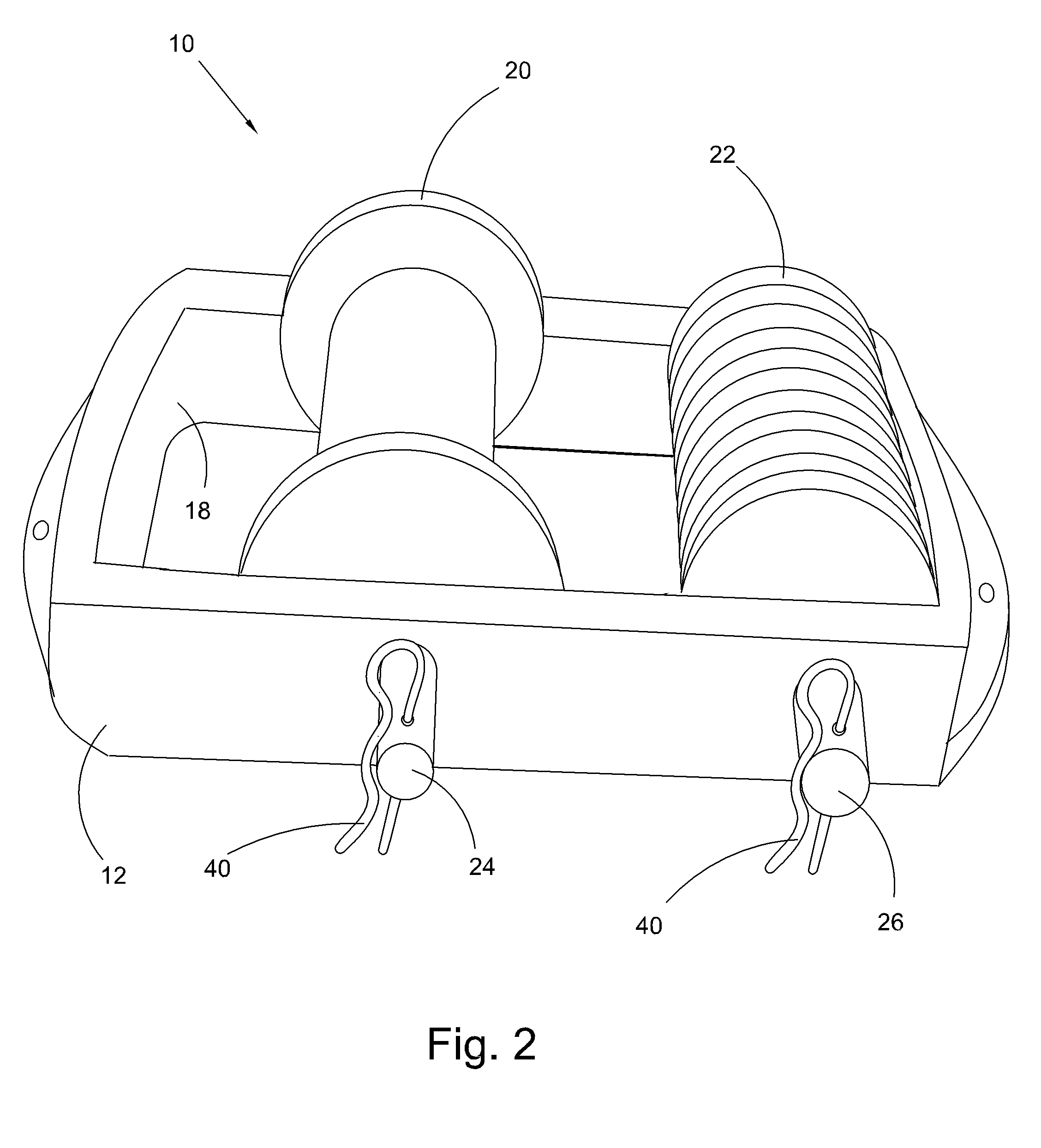Wire guiding device
a guiding device and wire technology, applied in the direction of cables, lifting equipment, special-purpose vessels, etc., can solve the problems of the need, inability to address the need for two electricians, and previous devices that have attempted to damage the wire, so as to prevent damage to the wire
- Summary
- Abstract
- Description
- Claims
- Application Information
AI Technical Summary
Benefits of technology
Problems solved by technology
Method used
Image
Examples
Embodiment Construction
[0018]As used herein, the term “wire” is meant to encompass wire, cable, string, and other materials (electrical, optical, or otherwise) which may be installed into conduit.
[0019]In FIGS. 1a-1c and 2, a device 10 according to an embodiment of the present invention is shown, wherein a frame 12 is adaptable to be attached to the access orifice of an LB fitting. The frame 12 may be made from metal or plastic. The frame 12 may contain two holes 14, 16, for attachment to the LB fitting using fasteners typically provided with such a fitting (fasteners are typically provided with each LB fitting in order to secure a cover over the access orifice). The frame 12 may be adapted for attachment to the LB fitting external to the fitting, within the fitting, or a combination of both.
[0020]The frame 12 contains a pass-through orifice 18 wherein a first roller 20 is mounted on a first axle 24 and a second roller 22 is mounted on a second axle 26. At least two holes 30, suitable for pass-through of ...
PUM
 Login to View More
Login to View More Abstract
Description
Claims
Application Information
 Login to View More
Login to View More - R&D
- Intellectual Property
- Life Sciences
- Materials
- Tech Scout
- Unparalleled Data Quality
- Higher Quality Content
- 60% Fewer Hallucinations
Browse by: Latest US Patents, China's latest patents, Technical Efficacy Thesaurus, Application Domain, Technology Topic, Popular Technical Reports.
© 2025 PatSnap. All rights reserved.Legal|Privacy policy|Modern Slavery Act Transparency Statement|Sitemap|About US| Contact US: help@patsnap.com



